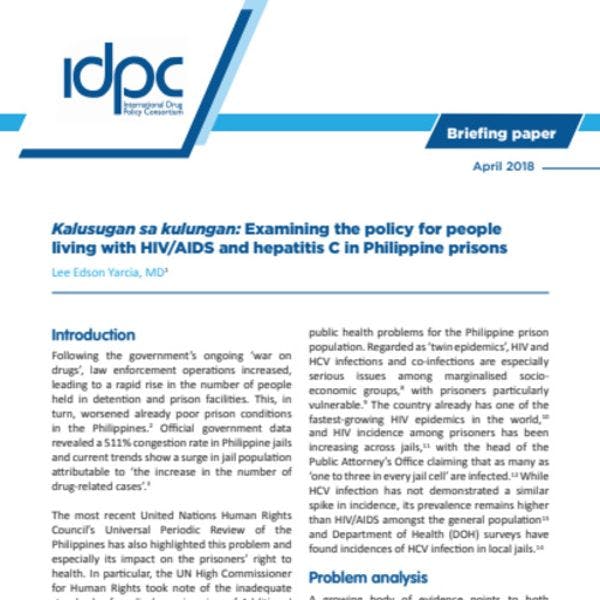Kalusugan sa kulungan: Examining the policy for people living with HIV/AIDS and hepatitis C in Philippine prisons
By Lee Edson Yarcia, MD - Policy & Research Officer, NoBox Transitions
Following the government’s ongoing ‘war on drugs’, law enforcement operations increased, leading to a rapid rise in the numbers of people held in detention and prison facilities. This, in turn, worsened already poor prison conditions in the Philippines. Official government data revealed a 511% congestion rate in Philippine jails and current trends show a surge in jail population attributable to ‘the increase in the number of drug-related cases’.
The most recent United Nations Human Rights Council’s Universal Periodic Review of the Philippines has also highlighted this problem and especially its impact on the prisoner’s right to health. In particular, the UN High Commissioner for Human Rights took note of the inadequate standards of medical care in prisons. Additional stakeholders went further, stating that ‘[p]risons were no longer able to ensure the health and safety of prisoners or meet minimal standards under international law’. The Committee Against Torture echoed these observations, particularly noting that the incidence of infectious diseases was ‘extremely high’. The UN country team added that treatment for health conditions for communicable diseases was ‘grossly inadequate’ in prisons.
With regard to particular infections, HIV/AIDS and hepatitis C (HCV) have become critical public health problems for the Philippine prison population. Regarded as ‘twin epidemics’, HIV and HCV infections and co-infections are especially serious issues among marginalised socio-economic groups, with prisoners particularly vulnerable. The country already has one of the fastest-growing HIV epidemics in the world, and HIV incidence among prisoners has been increasing across jails, with the head of the Public Attorney’s Office claiming that as many as ‘one to three in every jail cell’ are infected. While HCV infection has not demonstrated a similar spike in incidence, its prevalence remains higher than HIV/AIDS amongst the general population and Department of Health (DOH) surveys have found incidences of HCV infection in local jails.
